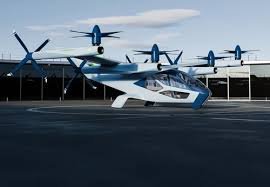In the evolving world of electric aviation, a new player is making waves—Hyundai’s Supernal AS-2. As part of our ongoing series on cutting-edge electric aircraft, we’re diving into this next-generation air mobility solution to uncover what makes it stand out in a market crowded with familiar designs.
The Urban Air Mobility Template—And Its Limits
Urban Air Mobility (UAM) has seen rapid convergence toward a standard design blueprint: high-wing layouts, seating for five (including the pilot), and a mix of tilting and lift-only rotors. Aircraft like the Joby S4, which uses six fully tilting rotors, are among the few exceptions.
Typically, these aircraft:
- Carry about 450 kg of payload
- Have a maximum takeoff weight of around 2,400 kg
- Deliver a range of approximately 100 miles (160 km)
These constraints are largely driven by current battery technologies, which limit performance and design flexibility.
Enter the Supernal AS-2: Innovation Through Design
While the AS-2 also features eight rotors, its defining innovation lies in their unique all-tilting configuration—four of which tilt downward. This strategic departure from convention addresses multiple engineering challenges at once, especially in efficiency and aerodynamics.
The Evolution of the AS-2
Hyundai’s initial UAM concept followed the traditional path: eight rotors in a staggered arrangement, with four fixed lift-only propellers. However, this setup had issues:
- Lift-only rotors become dead weight in cruise mode
- Fixed-pitch, two-bladed designs save weight but cause vibration and reduce efficiency
Some manufacturers, like Archer Aviation (Midnight) and Vertical Aerospace (VX4), have stuck with this compromise. Others, like Wisk Aero’s Generation 6 and CityAirbus NextGen, used four-bladed lift rotors to improve efficiency—though at the cost of added weight and drag.
The AS-2 solves this trade-off. By making all eight rotors tilt, the aircraft avoids the inefficiencies of lift-only propellers, reduces drag during cruise, and creates a push-pull configuration that improves yaw and roll control.
Why Downward-Tilting Rotors Matter
The debate between upward-facing (“puller”) vs. downward-facing rotors isn’t new. Traditional drones favor upward-facing rotors for better ground clearance and reduced debris risks. However, downward-facing (“pusher”) rotors offer better thrust efficiency, increasing lift by as much as 15%, as shown by Ehang’s Ghost drone.
In the AS-2:
- Downward rotors assist during vertical flight, reducing the energy needed to hover or climb
- When transitioning to forward flight, these rotors tilt to align with the aircraft’s direction, reducing drag and improving efficiency
This approach mirrors that of the Kitty Hawk Heaviside, one of the first eVTOL aircraft to achieve a 100-mile range using exclusively downward-tilting lift rotors. The design enhances wing lift during hover through rotor downwash—a principle that AS-2 also leverages.
Backed by Hyundai’s EV Expertise
A major advantage for Supernal is Hyundai’s deep knowledge in electric vehicle battery systems. This automotive backbone brings robust R&D, scalability, and safety into aerospace.
Among its standout features:
- Crash-resistant, energy-absorbing seat frames designed for aviation
- A sleek, insect-inspired fuselage shape for better aerodynamics
- Innovative lighting systems that signal vertical takeoff and landing modes—protected by pending patents
A Fresh Perspective on Air Mobility
With the AS-2, Hyundai is doing more than just entering the UAM space—it’s redefining the design language and functionality of electric air taxis. The aircraft’s all-tilting rotor system, focus on crash safety, and integration of proven automotive technologies make it one of the most exciting entrants in the market.
We’re keeping a close eye on Supernal as it moves from concept to reality—because this might just be the aircraft that reshapes the future of urban flight.
